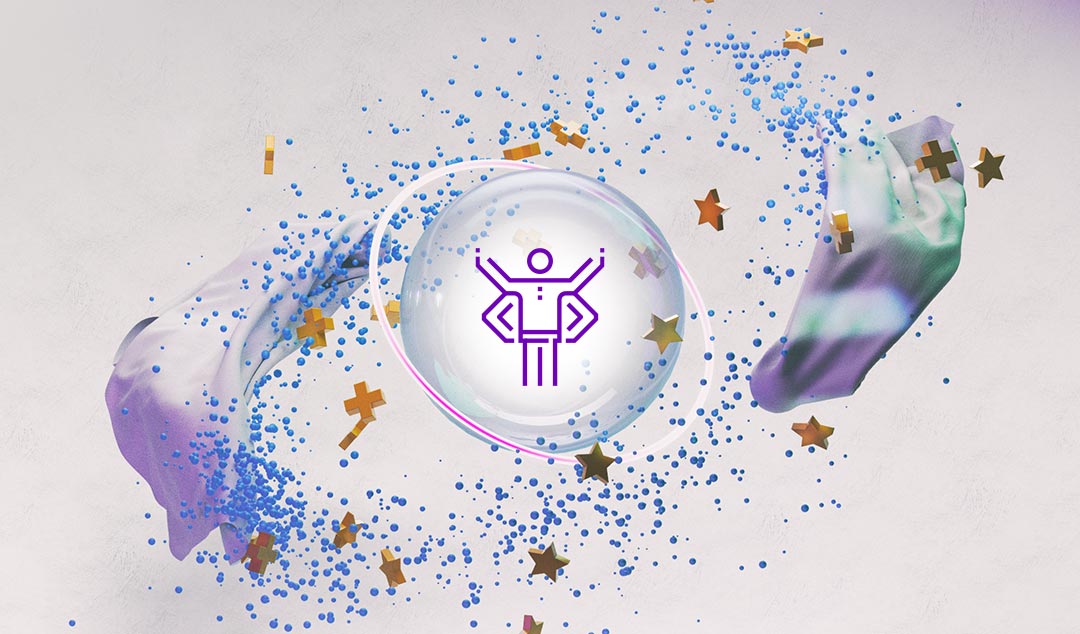From Test Maintenance Hell to Self-Healing Nirvana
Escape the test maintenance crisis. Learn how an agentic AI approach automates diagnostics and enables self-healing tests to boost QA efficiency.

When a test fails, what's the first reaction from your development team? If it's "Functionize is probably busted," you're not alone.
This default blame response is a symptom of a much deeper issue plaguing quality assurance: the test maintenance crisis. In many organizations, a single test failure can trigger 30 to 60 minutes of diagnostic work, pulling skilled engineers away from innovation and into a frustrating cycle of troubleshooting.
This problem is compounded by an expertise gap. The individuals with the deep knowledge required to diagnose complex failures are often the busiest, creating a significant human bottleneck. This reality has turned test automation into a source of constant friction, rather than a driver of efficiency.
However, a new paradigm is emerging. By leveraging an agentic AI approach, we can move beyond the limitations of traditional, script-heavy automation. This guide will walk you through how an agentic platform transforms test maintenance from a manual, time-consuming chore into an autonomous, self-healing process, ultimately delivering a higher quality product faster. We'll explore how this technology addresses the human bottleneck, implements self-healing, and provides a clear return on investment.
The Human Bottleneck in Test Analysis
In traditional testing environments, diagnosing a failed test is a complex, multi-factor investigation. An engineer must manually sift through console logs, network traces, and element locators, all while considering potential timing issues. This process is not only time-consuming but also places a heavy cognitive load on your team.
The Complexity of Manual Diagnosis
When a test breaks, the analysis requires a deep understanding of the application's front end, back end, and the testing framework itself. This multi-factor diagnosis involves:
- Analyzing Disparate Data Sources: Engineers must manually correlate information from various sources like browser console logs, network (HAR) files, and system logs to piece together the sequence of events that led to the failure.
- Wrestling with Cognitive Load: The sheer volume of data and the number of potential failure points can be overwhelming. This high cognitive load makes manual analysis prone to human error, leading to misdiagnosed issues and wasted effort.
- Navigating Dependency Risks: Often, the specialized knowledge needed to debug these complex issues is concentrated in just a few key individuals. This creates a significant dependency risk; if those experts are unavailable, the entire testing and release process can grind to a halt.
This manual, reactive approach is simply not scalable. As applications grow in complexity and release cycles accelerate, the human bottleneck becomes a critical constraint on your team's ability to deliver quality software at speed.
Agentic Diagnostic Intelligence: The Autonomous Solution
An agentic AI platform fundamentally changes the equation by automating the entire diagnostic process. Instead of relying on human engineers to manually investigate failures, AI agents work autonomously to perform root cause analysis with speed and precision.
Automated Root Cause Analysis
Functionize's platform uses a series of specialized AI agents to handle different aspects of the testing lifecycle. When a test fails, the Diagnose Agent takes over. It simultaneously processes multiple data streams—including screenshots, logs, and performance metrics—to pinpoint the exact cause of the failure.
This multi-modal processing allows the agent to understand the full context of the execution. It can differentiate between a true application bug, an environment issue, a data problem, or a change in the UI that requires the test to be updated.
The Speed Advantage of AI
The most significant advantage of an agentic approach is speed. What takes a human engineer minutes or even hours of painstaking manual work, an AI agent can accomplish in seconds. By automating the diagnostic process, you free your team from the endless cycle of troubleshooting flaky tests. This allows them to focus on what they do best: building high-quality features and improving the end-user experience. Functionize's platform has been shown to reduce test breakage from around 30% in traditional frameworks to just 3-5%.
Self-Healing: From Diagnosis to Resolution
Diagnosis is only half the battle. Once the root cause of a failure is identified, the test needs to be fixed. This is where self-healing comes in. An agentic platform doesn't just tell you what's wrong; it actively works to resolve the issue.
Dynamic and Iterative Problem Solving
The platform's Maintain Agent uses a proprietary 5D element model, which captures over 300 data points for every UI object. When the application's UI changes, this rich model allows the agent to intelligently identify the new state of an element and update the test steps accordingly.
If a simple fix isn't possible, the system can test multiple approaches to resolve the issue. For example, it can adjust wait times, modify element locators, or even re-map user flows to adapt to changes in the application's business logic. This iterative problem-solving ensures that tests remain resilient and reliable, even as the application evolves.
Real-World Self-Healing Examples
In practice, this translates to tangible improvements in test maintenance. The platform can automatically:
- Adjust Wait Steps: If a page element is loading slower than usual, the system can dynamically increase the wait time to prevent a false failure.
- Apply SmartFixes: When an element's attributes change, the Maintain Agent can apply a "SmartFix" to update all referencing test steps automatically.
- Handle Timing Models: The system intelligently manages retries and adjusts to variations in application performance, reducing test flakiness by up to 80%.
This level of autonomous maintenance dramatically reduces the manual effort required to keep your test suite healthy and effective.
The Reflection and Learning Loop
A truly intelligent system doesn't just fix problems—it learns from them. An agentic platform includes a powerful feedback loop that enables continuous improvement and predictive maintenance.
Offline Analysis and Continuous Improvement
Functionize allows you to create "restore points" of your application and test executions. This provides an offline environment where your team can experiment with different fixes and analyze failure patterns without impacting the live testing process.
The insights gained from these analyses are fed back into the platform's knowledge base. The AI agents learn from every failure and every fix, becoming progressively smarter and more effective over time. This continuous learning loop helps the system move from a reactive to a proactive maintenance model. By identifying patterns that lead to test failures, the platform can predict potential issues before they occur and suggest preventative actions.
Calculating the ROI of an Agentic Approach
The shift from manual test maintenance to an autonomous, self-healing model delivers a clear and compelling return on investment. The cost savings are realized through several key areas:
- Reduced Engineering Overhead: By cutting test maintenance by up to 80%, you reclaim countless hours of valuable engineering time. For example, GE Healthcare was able to create 240 automated tests in just three days—a task that would have previously taken 22 days of effort.
- Lower QA Spending: Organizations can reduce their QA spend from as high as 30-50% of the total engineering budget to less than 10%. This is achieved by eliminating the high costs associated with legacy tool brittleness and manual maintenance.
- Accelerated Release Velocity: With a more reliable and resilient test suite, your team can release new features with greater confidence and speed. This allows you to respond more quickly to market demands and maintain a competitive edge.
The implementation timeline for an agentic platform is often surprisingly short. With features like the Create Agent, which generates test cases from natural language, your team can get up and running quickly. Non-technical users can begin authoring test suites with minimal training, democratizing the testing process and further accelerating your path to ROI.
A New Future for Quality Assurance
The maintenance crisis has held quality assurance back for too long, trapping skilled engineers in a reactive cycle of troubleshooting and repair. An agentic AI approach offers a way out. By automating diagnostics, implementing self-healing, and creating a virtuous cycle of learning and improvement, you can transform testing from a bottleneck into a strategic enabler.
The future of QA is not about writing more scripts or hiring more engineers to manage them. It's about building an autonomous, AI-driven quality function that operates seamlessly within your development sprints. By embracing this new paradigm, you can finally escape maintenance hell and achieve a state of self-healing nirvana.











